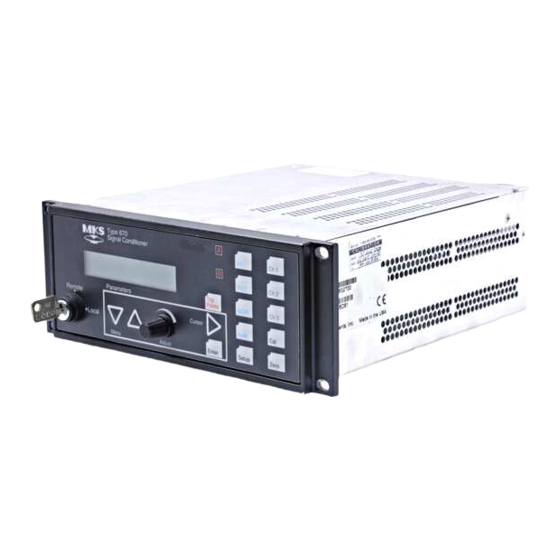
User Manuals: MKS 670B Signal Conditioner
Manuals and User Guides for MKS 670B Signal Conditioner. We have 1 MKS 670B Signal Conditioner manual available for free PDF download: Instruction Manual
MKS 670B Instruction Manual (168 pages)
High Accuracy Signal Conditioner
Brand: MKS
|
Category: Industrial Equipment
|
Size: 3 MB
Table of Contents
Advertisement
Advertisement
